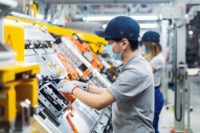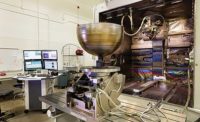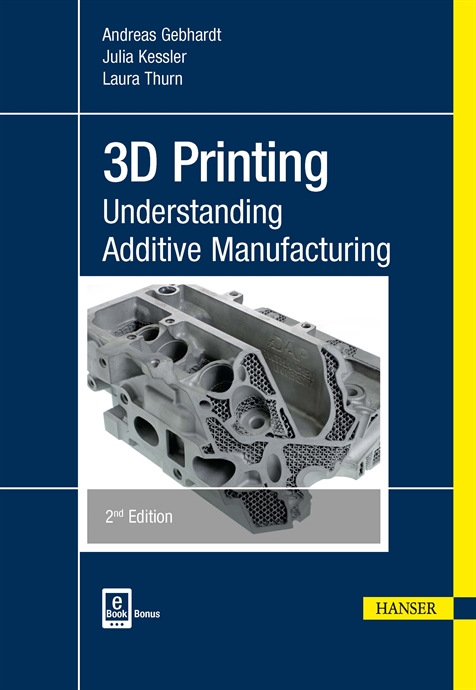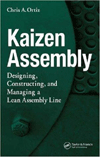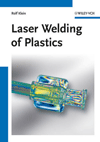Jabil Inc., a U.S.-based global manufacturing services company with electronics design, supply chain, production and product management capabilities, is investing heavily in additive manufacturing. The technology enables the $18 billion company to speed time to market and cost-effectively produce a wide variety of low-volume products. ASSEMBLY recently asked John Dulchinos, vice president of digital manufacturing at Jabil, to explain the pros and cons of printing with metal.
ASSEMBLY: What is the biggest difference between printing parts with metal vs. plastic?
Dulchinos: The cost of metal additive manufacturing machines and the amount of post-processing is much more extensive than what is required to produce end-use plastic parts. Metal also is much harder to work with generally and usually requires capital equipment, such as EDM wire cutters, CNC machines and heat-treating equipment.
Today, metal printing often requires destructive and nondestructive testing (including X-ray) to ensure mechanical integrity, quality consistency and durability. Jabil is continuing to make significant investments to refine and enhance 3D printing processing. This includes testing and parts validation, so customers can ramp volume production.
In dealing with metal, it’s imperative to complete thorough design-for-additive-manufacturing (DfAM) processes to enhance performance, directly or indirectly, as part of a system enhancement, or to deliver cost-out by combining components. [We] work closely with customers to help them determine feasible economic models. In the future, these models will play increasingly larger roles in determining the scope of upfront costs, including what it will take to enhance performance or improve break-even points based on the ability to combine the production of multiple parts.
ASSEMBLY: Is it generally easier or more difficult to print metal parts vs. plastic?
Dulchinos: It’s more difficult to produce 3D-printed metal parts, primarily because of existing capital costs of 3DP metal technologies, extensive post processing and expensive metal materials. As a result, current applications for 3D-printed metal parts are mostly relegated to high-end applications. The most prevalent use cases emerging today are in aerospace and healthcare.
ASSEMBLY: What is the latest trend in metal additive manufacturing?
Dulchinos: Metal additive manufacturing is gaining significant traction in the aerospace industry, which will serve as a useful barometer for other segments, including automotive. The emergence of lower cost technologies, including new technologies that will increase utilization, also will play an important role in removing barriers to market entry. Another trend, which Hewlett-Packard has championed in the plastics realm and Desktop Metal is embracing on the metal front, is the availability of an open materials solution. This approach will enable more widespread applications in the near future. For Jabil, low-cost metal AM is a game changer, as it will empower the company to bring 3D printing to new customer segments that couldn’t be approached previously with existing metal printing technologies.
ASSEMBLY: Which metal printing process is the most popular today?
Dulchinos: Electron beam melting (EBM) surface finishes don’t have the same quality, as they use larger particle sizes. However, EBM is faster, which can help reduce the amount of machine depreciation for each part. More porous surface finishes make EBM particularly well suited for healthcare applications, especially in dealing with bone implants such as osseointegration.
ASSEMBLY: Has the cost of raw materials for metal 3D printing come down in the last 2-3 years?
Dulchinos: The cost of materials is coming down as increased demand drives purchases of larger buying batches. Prices are still exorbitant, however, which means there must be continued cost reductions in coming years for 3D metal printing to gain significant traction. The current high cost is driven by expensive processes to produce very spherical powders and relatively low demand when compared to other 3D printing technologies.
ASSEMBLY: What is the biggest myth or misperception about using metal for additive manufacturing applications?
Dulchinos: The biggest myth is that the barriers to entry are so high that it’s cost prohibitive to enter the metal AM market. The latest technology advancements and open materials innovations will make it much easier for companies to develop viable 3D metal printing [applications in the future]. Additionally, the learning curve for 3D metal printing is becoming less steep, thanks to growing institutional knowledge in machine operations, as well as the proliferation of software and DfAM. In addition, metal AM machine manufacturers are gearing up their application engineering capabilities to help customers minimize learning curves.
ASSEMBLY: What challenges or issues still need to be addressed before metal printing becomes more popular?
Dulchinos: While metal printing needs to evolve further to attain mainstream status, it’s already proving its worth in certain markets, such as aerospace, automotive and healthcare. To lower hurdles for wider acceptance, there must be continued reductions in metal AM costs, leading ultimately to production of lower-cost parts at scale that compete with traditional metal fabrication methods, especially casting and machining.
Initially, [we] expect to see metal AM reach break-even points at lower volumes (thousands of parts) before scaling upward to achieve break-even points for tens of thousands of 3D printed metal parts. It will likely take two to three years before the industry achieves those volume levels.
The key to greater adoption is the ability to lower the cost per part for metal AM. Unless that occurs, metal AM will remain a niche solution for industrial MRO applications, as that’s one area where the business case is currently compelling. Even with high part costs, metal AM is still more attractive in that arena where the financial return on early investments pays off once you factor in the extremely high capital costs of deploying and maintaining legacy equipment.
Still, the promise of metal AM extends beyond industrial MRO and advancements in metal AM. Continued refinements in processing, testing and parts certifications will set the stage for emerging opportunities across a variety of industries.


